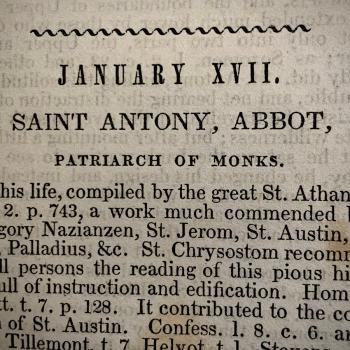Like many Christian churches, Latter-day Saints ("Mormons") practice confirmation. We are commanded "to confirm those who are baptized into the church, by the laying on of hands for the baptism of fire and the Holy Ghost, . . . and to confirm the church by the laying on of the hands, and the giving of the Holy Ghost" (D&C 20:40-43).
Confirmation is one of two rites through which a person becomes a member of The Church of Jesus Christ of Latter-day Saints and receives remission of sins. The other is baptism, and together these ordinances symbolize the person's purification from sin and reunification with God, "a reuniting of the soul of man with soul of God" (B. H. Roberts, Conference Report, April 1911, p. 60).
After a person is baptized, two or more persons who hold the Melchizedek priesthood (the higher of Mormonism's two priesthood orders, held by almost all adult males) lay their hands on the new convert's head. In the name of Jesus Christ and by the authority of the priesthood, the person acting as the voice for the ordinance calls the person by name and commands him or her, "Receive the Holy Ghost." He follows that with whatever words of blessing and counsel he feels inspired to give. The person is confirmed.
But what does it mean to be confirmed? The word means "to make more firm or strong." A person confirmed after baptism is made stronger by being commanded to receive the Holy Ghost. Such a belief and practice accords well with the promise Jesus made to the Twelve: "I will pray the Father, and he shall give you another Comforter" (Jn. 14:16). But as true as that is, it doesn't answer the question.
One meaning of "confirm" is "ratify." A convert's baptism is ratified by her confirmation. Why a public rite performed by church authority would require further ratification is not clear, but the language of Doctrine and Covenants 20—confirm those who are baptized into the church"—is that of ratification. Clearly, however, more is going on than that.
John tells us that Jesus promised his followers a paraklētos, someone who aids another. The Greek word suggests someone who encourages and offers consolation. Mormon discussions, though rarely connected directly to the Greek, often take that view. The Holy Ghost is understood to be a person of the Godhead who comes to our aid, sometimes offering inspiration for what course of action to take, and supporting us in sorrow.
But Mormons believe in at least one other divine spiritual influence, "the Light of Christ." Mormon scripture teaches that the light of Christ is a universal influence by which people may judge good from evil (Moroni 7:18-19). It is a gift given to every human being (Jn. 1:9). A 1916 statement from the LDS Church's First Presidency (roughly comparable to a papal encyclical) teaches that this influence is available to people according to their faith and obedience (Messages of the First Presidency, vol. 5, p. 4). Mormons make no claim that only they can be inspired by God.
But there is no specific way to distinguish when any particular inspirational experience is of the Holy Ghost rather than the Light of Christ. Both give divine inspiration. Both guide us in knowing right from wrong. Presumably both can offer strength to a wounded soul. Mormons believe that what distinguishes them is that the Holy Ghost has the specific function of testifying of Jesus Christ. Since the Holy Ghost is a person in the Godhead, to receive the Holy Ghost is to receive God's presence. It is to receive "a permanent witness and a higher endowment" (Messages), a confirmation of the testimony that Jesus is the Christ, the Savior of all who will come to him.
Presumably the baptized person has come to conversion and baptism by faith and repentance made possible through divine influence, whether that of the Light of Christ or that of the Holy Ghost. But, having been baptized, she is now made strong, confirmed in her new testimony, by being told to receive the continual divine witness of the Spirit.
Converts agree to "stand witnesses of God at all times and in all things" (Mosiah 18:9). That covenant can be both ratified and made strong by the witness of the Holy Ghost, which will be an abiding, permanent witness if those baptized will receive it.





